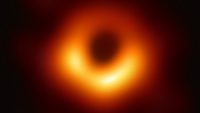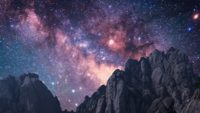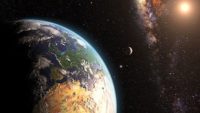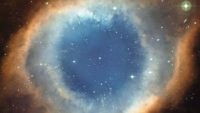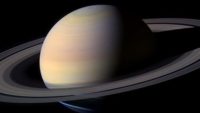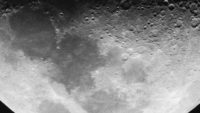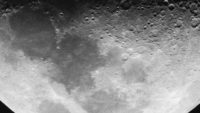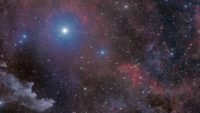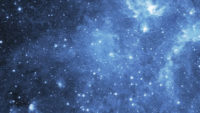By Dr. Danny R. Faulkner While we can’t see many things, there is evidence for their existence by the observable effect that they have on other things. The same is true of black holes. …read more Source: AIG Daily
By Dr. Danny R. Faulkner Astronomers have thought that the conditions in planetary nebulae might be conducive to production of helium hydride. …read more Source: AIG Daily
Using data obtained from the Hubble Space Telescope, astronomers have confirmed a contradiction between two different estimates of the Hubble constant—an extremely important number in cosmology.1 Secular scientists claim the universe is expanding as a result of a “Big Bang” 13-14 billion years ago. The inference of an expanding universe is based on the fact that the light spectra from dist… More… …read more Source: icr.org
By Dr. Danny R. Faulkner The latest measure of the Hubble constant (H0) recently made headlines. …read more Source: AIG Daily
The results of a computer analysis to investigate how the solar system might have formed should cause evolutionists to think again about naturalistic processes. …read more Source: creation.com
On April 10, 2019, a team of astronomers revealed the first-ever photograph of a black hole.1 Modern physics sees time and space as being interconnected, forming a kind of “fabric” or “membrane” called spacetime. A black hole is a region of spacetime that is extremely distorted by the presence of a sufficiently dense mass. The gravity in this region is so strong that anything getting too close to … More… …read more Source: icr.org
How do black holes relate to biblical creation? …read more Source: creation.com
By Troy Lacey Researchers looked at the most recent number of extrasolar planets in the habitable zone and applied an additional set of conditions needed for “life to form.” …read more Source: AIG Daily
God tells us in Genesis how and when He created the heavens and the earth. It wasn’t by means of a bang no matter how big. …read more Source: creation.com
By Dr. Danny R. Faulkner A recent news item reported the discovery of neutrinos from just one second after the big bang. Such a thing would be big news, but could such a thing be true? …read more Source: AIG Daily
By Ken Ham A recent article on Forbes.com had a headline that blared, “Earliest Signal Ever: Scientists Find Relic Neutrinos From 1 Second After The Big Bang.” So, is that it now for biblical creation (and a host of secular creation stories offered as alternatives to the big bang)? Have scientists discovered proof that the big bang really happened? Well, not so fast! The headline suggests that some of these relic neutrinos, supposedly from one second after the big bang, have been detected. But with a discerning read through the article, it becomes very clear how many of these “primordial” [More]
By Dr. Danny R. Faulkner ET isn’t a mystery, if you’re willing to examine the data from 60 years of research and take it to its logical conclusion. …read more Source: AIG Daily
By Dr. Danny R. Faulkner Recently there have been press accounts of two new studies related to cosmology. What is new, and what does this mean to creationists? …read more Source: AIG Daily
By Dr. Danny R. Faulkner Consideration of the first and second laws of thermodynamics leads to the conclusion that the universe’s origin is a metaphysical or spiritual question. …read more Source: AIG Daily
By Dr. Danny R. Faulkner A recent news story reported on the latest measurement of Saturn’s rotation rate. This is significantly shorter than what is found in most astronomy textbooks. …read more Source: AIG Daily
On January 21, 2019, during a total lunar eclipse, astronomers and amateur stargazers alike saw a small meteorite strike the lunar surface.1 The collision was seen as a flash of light just before midnight Eastern Time. The darkened surface of the moon during the eclipse made the flash much easier to see. Although scientists have observed and recorded other meteorite strikes on the lunar surface, this is apparently the first time … More… …read more Source: icr.org
By Dr. Danny R. Faulkner Flat-earthers often claim that moonlight has a cooling property. I present the results of three independent experiments that test this claim. …read more Source: AIG Daily
The recent discovery of thirty new exoplanets in other solar systems presents another challenge to the most popular secular theory of planet formation.1,2 These exoplanets are smaller versions of our gas giant Saturn. A recent survey shows that these intermediate gas giants are ten times more common than predicted by the secular theory.3 One of these intermediate gas giants, designated O… More… …read more Source: icr.org
By Dr. Danny R. Faulkner What do lunar eclipses tell us about flat earth? Lunar eclipses remain the best method for most people to see for themselves that the earth is a sphere. …read more Source: AIG Daily
Saturn’s gravity keeps vacuuming up its own stunning rings. NASA scientists have estimated how fast this process happens. The rings lose six Olympic-sized swimming pools-worth of material every hour according to new results from NASA’s Goddard Space Flight Center.1 For this and other reasons, scientists have concluded that the rings are unlikely to be more than 100 million years old. These rings look young, forcing sc… More… …read more Source: icr.org
The evolutionary timeline has a problem: Saturn’s icy rings are too ‘pristine’. …read more Source: creation.com
By Dr. Danny R. Faulkner What’s up in 2019? The year begins with a bang, for on the morning of January 1, the moon and Venus will be close together in the sky. …read more Source: AIG Daily
By Dr. Don DeYoung There have been many attempts to explain the Christmas Star scientifically, and three will be mentioned here. …read more Source: AIG Daily
When it comes to explaining how our universe came into being, widespread speculation is embraced over hard evidence. …read more Source: creation.com
By Dr. Danny R. Faulkner Flat-earthers argue that since certain verses in Scripture speak of the stars falling, then the stars will literally fall. …read more Source: AIG Daily
After speaking at a church recently, a young man approached me. I thought he might have a question. Instead, he handed me a 6-page essay he had written. It was a defence of a form of Day-Age creationism, the belief that the days of Genesis were actually long periods of time. Normally, I would not spend too much time on such a thing, but the young man impressed me as humble and studious. He also reminded me of myself at that age, when I was trying to defend that very same position. But when I read his paper, I saw [More]
By Ken Ham A short article appeared recently in an “Ask a Scientist” column in response to the question, “How did the Big Bang begin?” The scientist explains, “The Big Bang Theory is a timeline of the history of the universe. It says nothing about how the universe was created. As such, there is no beginning to the Big Bang, since it is a theory that merely describes the universe’s history.” He goes on to explain that in the Big Bang model (which he wrongly refers to as a theory, as there’s no observational evidence to support it), the entire [More]



















